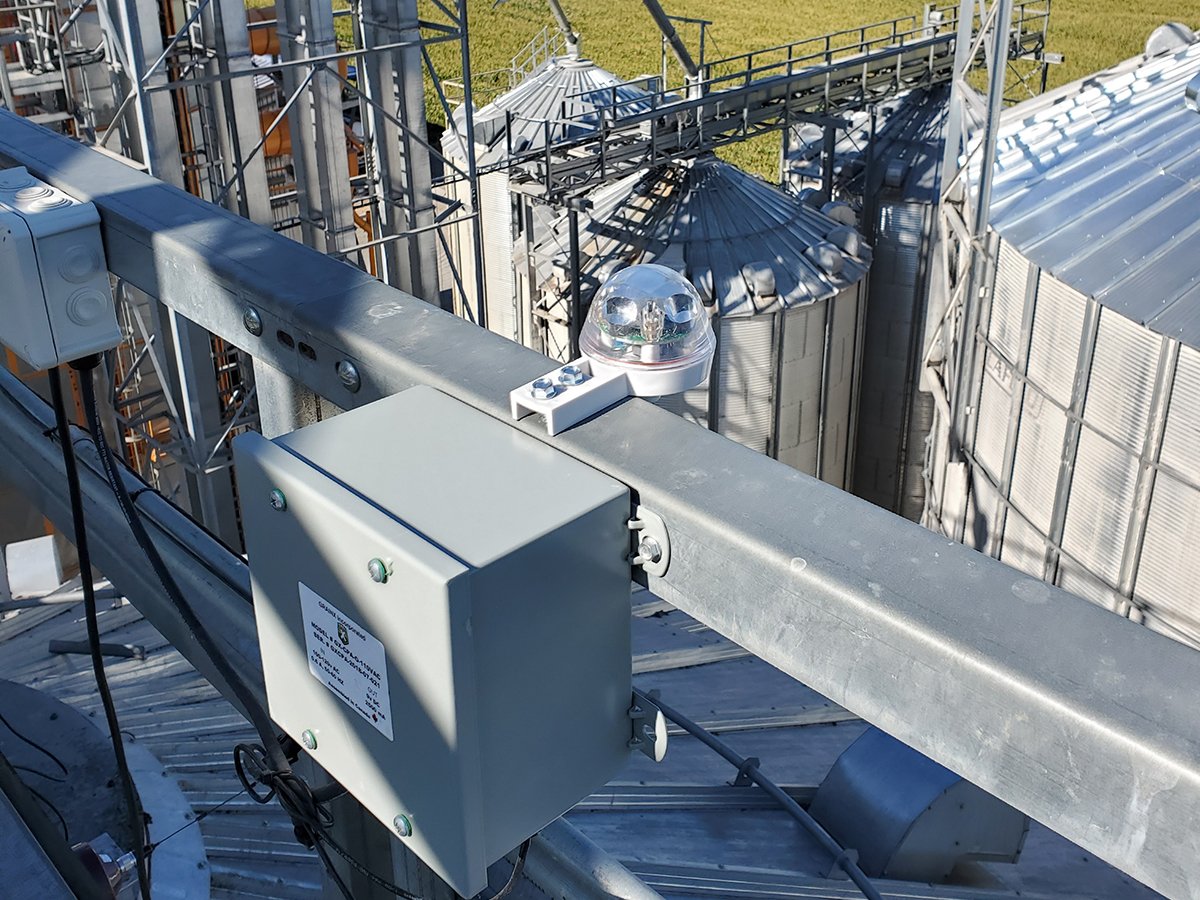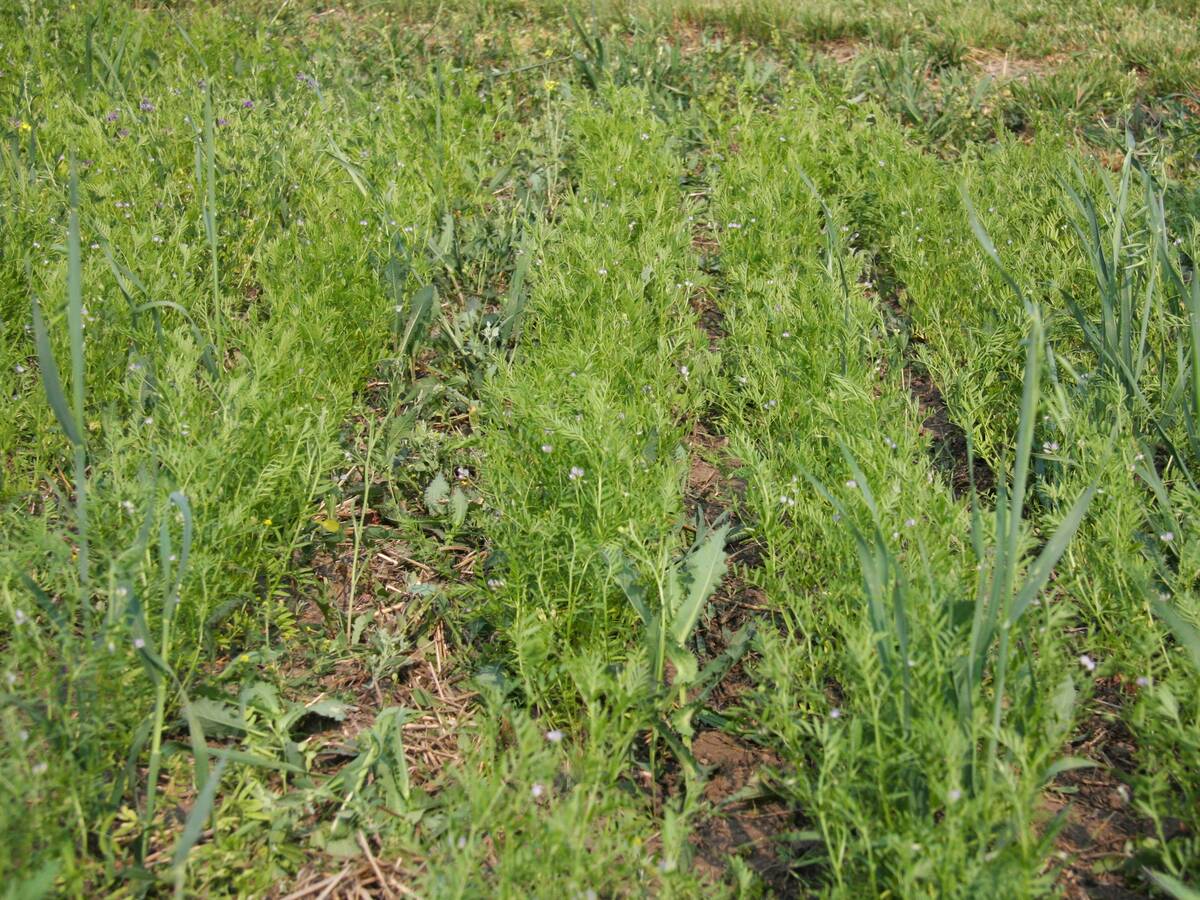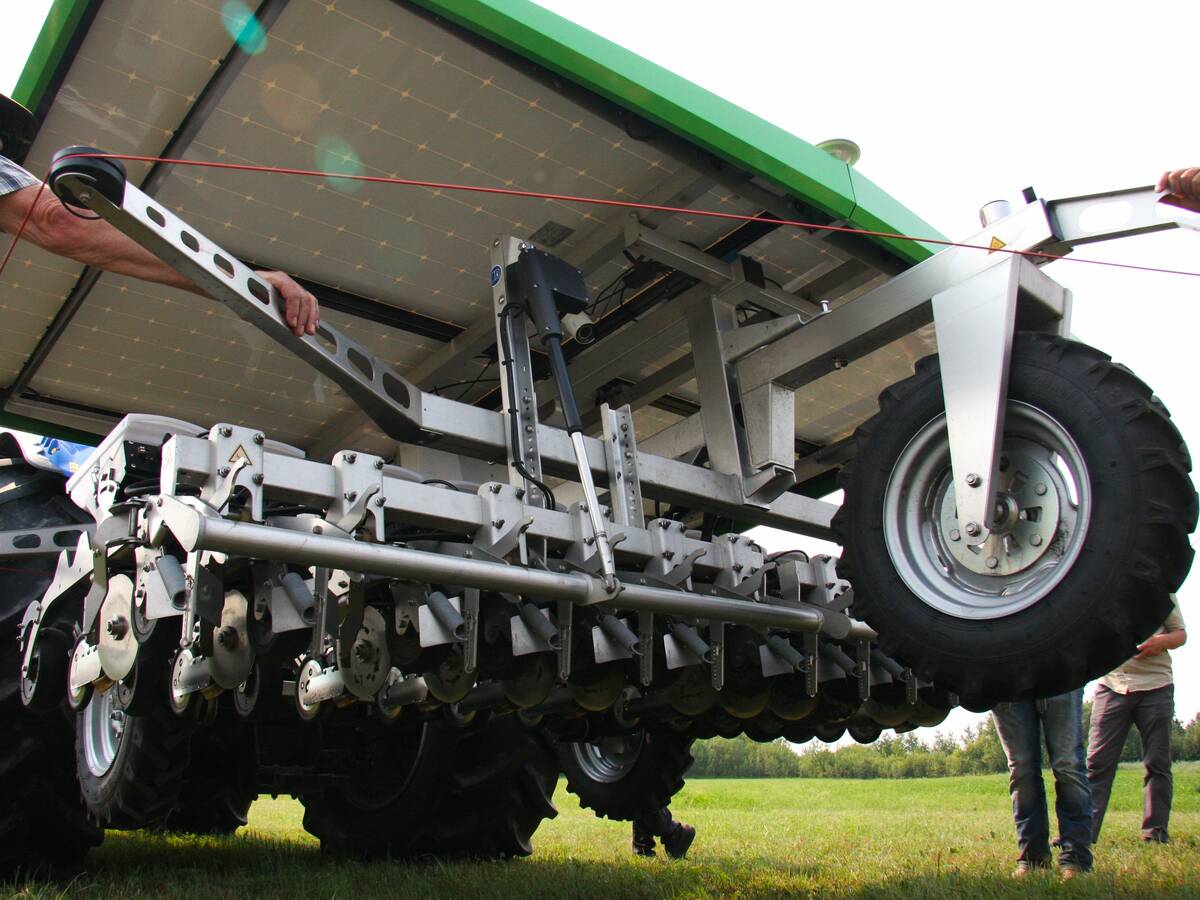Glacier FarmMedia — For natural, horticulture and small-scale farmers, a brand-new plaything is readily available and making waves.
Stefan Graner, an organic farmer near Paddockwood, Sask., has actually been utilizing FarmDroid , an independent seeding and weeding robotic, for four years. Its efficiency and accuracy have proven to have solid economic benefits for him.
At $ 150, 000 to $ 180, 000, they’re not inexpensive investments, despite federal financing readily available. However, for Graner’s procedure, the innovation has actually been such a wonderful enhancement that he currently has 3 of the robots.
Check out Also

Wireless grain monitoring is a grain spoilage saviour
GrainX is a wireless grain storage space surveillance solution and technology business whose information is sent out to the cloud for manufacturers to accessibility by means of computer and smart device.
“We’re relatively small range,” he claimed at the Saskatchewan Organics field day earlier this summertime.
“I most likely do a total of 750 acres myself. Of that, some is in cover crops, and perhaps 4 to 500 or 450 remain in plant this year.”
Commonly, Graner seeds a crop for two years and adheres to with two to three years of cover crops. However, the field he showed at the area day had been chopped for 4 years, beginning with mustard, then hemp, oats and currently black lentils.
The lentils were seeded by the FarmDroid and were also weeded by it.

The robotic has had its job suitable it, however. Graner claimed there’s been a lot of volunteer oats in the crop, in addition to alfalfa, which was his cover plant from five years ago.
It works finest when weeds are smaller due to the fact that the machine has arms that act like “knives” to remove weeds in between the plants. However, if the plants are also big, they can catch on the arms and be pulled out.
The most effective component of this for organic and horticulture producers is that not just does it obtain in between the rows however in between the plants themsleves.
This stops the weeds from robbing dampness from the crop.
Furthermore, the arms only go into the soil concerning a half inch, so deep rooted weeds aren’t quickly removed. As a result of this, Graner usually pairs it with and interrow farmer to limit big weeds in between the rows.
When it pertains to seeding, the maker works quite smooth. It will seed about 1 25 acres per hour– it has a maximum speed of one kilometre per hour– and just stops if it runs out of seed, the battery is reduced or weather conditions are bad.
“These can have an additional battery pack and run 24 hours a day, seven days a week,” said Mark Weber, FrontLink territory manager and a FarmDroid representative.
“The photovoltaic panels, commonly, specifically at this time of year, they’ll easily fill out the batteries and maintain you running. Most individuals, if they’re running 2 batteries, they’re getting till two, three in the morning. It quits and afterwards, usually within half an hour of the sunlight being up, it’ll fire itself back up, and away it goes.”
The 4 seed hoppers each hold 6 litres. With this ability, if Graner is seeding mustard, lentils or hemp, he’ll load it in the early morning and as soon as in the evening.
He’s discovered that with the robot, less seed is being used. After seeding his lentils, he was still entrusted a partial bag, despite the fact that he would certainly done his calculations correctly.
Weber stated that this has actually been observed by other producers as well, both small scale and horticultural producers. As a result of advanced precision, the FarmDroid is able to make certain higher accuracy, resulting in less seed, he added.
Thus far, there’s been no result to yields.
Rather, Graner and Weber’s other customers have all stated they have actually seen a rise when contrasted to conventional seeding practices. In between the precision of seeding and precision of weeding, there’s an overall far better use of both land and wetness.
Nonetheless, there are problems with the robotic when it comes to bigger seeds such as oats, peas and wheat. The largest possible seed size, presently, is eight millimetres. In 2015, Graner attempted to utilize it to seed wheat but encountered some concerns.
“I intended to seed it just like I ‘d seeded the lentils in capsules of one to 3 seeds every 6 inches, roughly, approximately,” he claimed.

“I would have seeded one little hull of seeds, just so I get, without a doubt, a plant expanding. And after a few metres approximately, it plugged. The seeds were as well huge, the valve didn’t open and the robotic said, ‘no, not mosting likely to do it.’ It sent me a text and stopped.”
After returning and disconnecting it 3 times, Graner totally opened up the seed valve and established it to a two-inch seed placement. While this got the seeding done, it really did not permit the robotic to go back to weeding in between the plants due to the fact that the rows were no longer also.
Graner has had rather the discovering contour with the robot, yet he’s identified the most effective means to make use of the devices for his operation.
On a mobile phone, producers can utilize the machine’s camera to view what’s happening, transform it on and off, receive notifications when it quits and are informed the factor for quiting.
When he got the hang of it, Graner said it’s been extremely simple to program. If a manufacturer recognize how to set up an auto-steer program, they’ll be able to do this.
It’s also very straightforward to input “obstacles” such as shrub, sloughs or driveways. These can also be included after the preliminary programs, such as in situations of heavy rainfall that leaves standing water.
